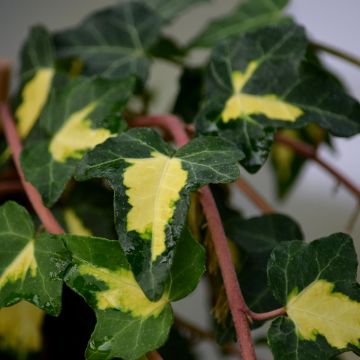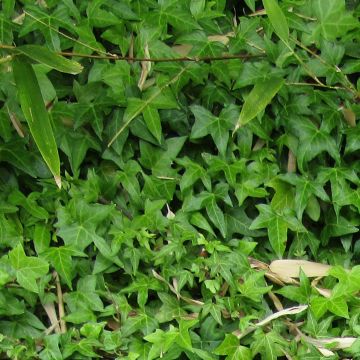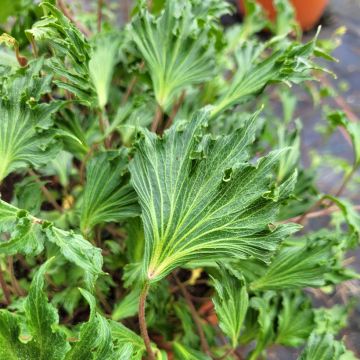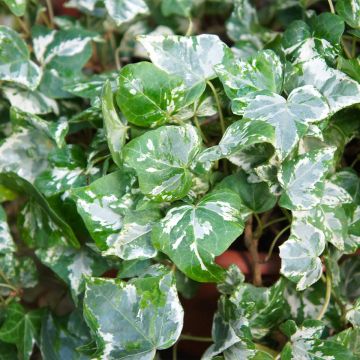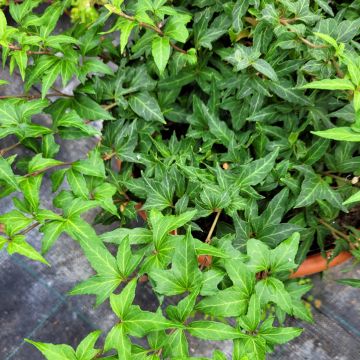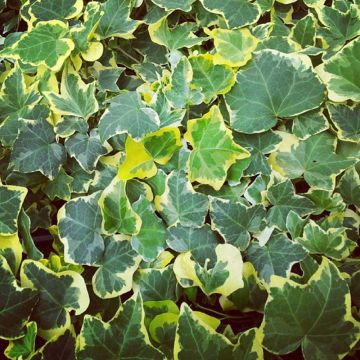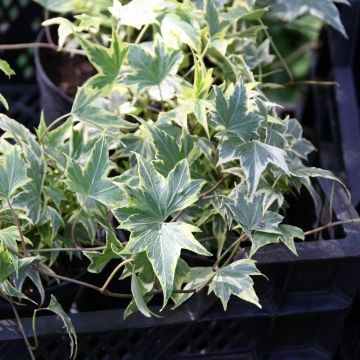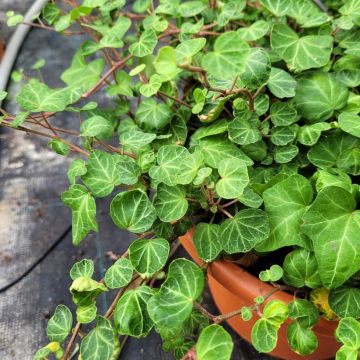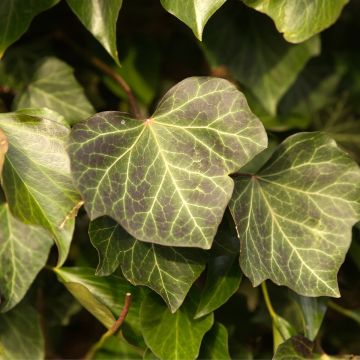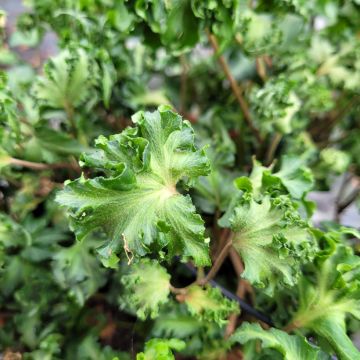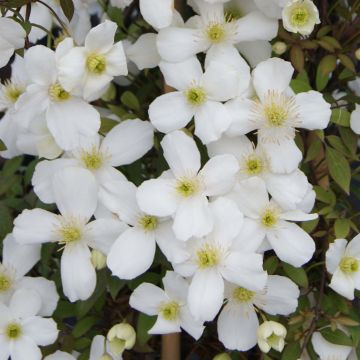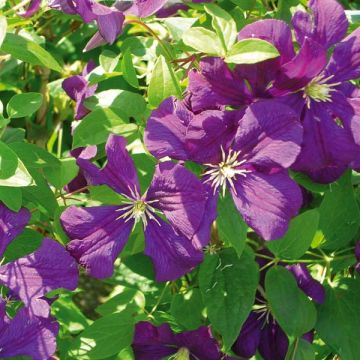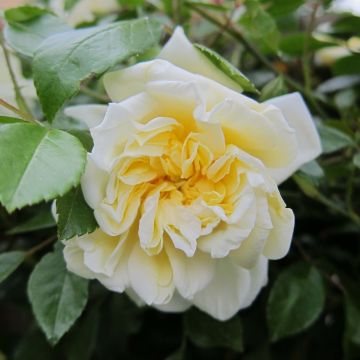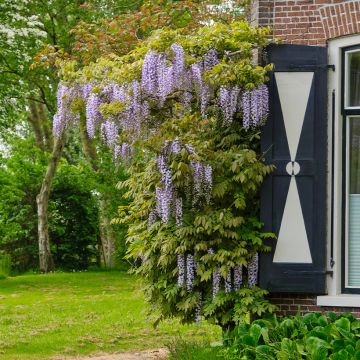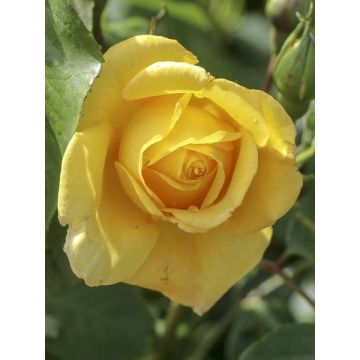

Hedera helix Arbori Compact - Common Ivy
Hedera helix Arbori Compact
English Ivy, Common Ivy, European Ivy
Plants arrived in good condition, planted immediately. They will complement the ones I already have, which are thriving in clay-limestone soil, some in shade and others in partial shade.
Jocelyne, 02/06/2023
This item cannot be shipped to the selected country
Delivery charge from €5.90
More information
Schedule delivery date,
and select date in basket
This plant carries a 6 months recovery warranty
More information
We guarantee the quality of our plants for a full growing cycle, and will replace at our expense any plant that fails to recover under normal climatic and planting conditions.
From €5.90 for pickup delivery and €6.90 for home delivery
Express home delivery from €8.90.

Does this plant fit my garden?
Set up your Plantfit profile →
Description
Hedera helix 'Arbori Compact' is a variety of non-climbing common ivy, forming a small bush with shiny dark green leaves, beautifully rounded and unlobed. It is exceptionally floriferous, producing numerous whitish flowers, very attractive to bees, followed by abundant black fruits that persist until the following spring! Its bushy and compact habit requires no pruning and it thrives wonderfully in pots. This ivy forms very beautiful and dense low borders and hedges. It is a hardy plant everywhere and has no specific soil or exposure requirements.
Ivies belong to the aralia family, they are cousins of Ginseng and fatsias. Hedera helix 'Arbori Compact' is derived from common ivy, which is found in European forests, the countryside and gardens. The latter is native to the entire Eurasian temperate zone of the northern hemisphere. 'Arbori Compact' is a non-climbing common ivy that forms a wide and upright bush of a maximum of 1 metre (3 feet) in all directions. It is a plant that tends to spread with age and is often wider than it is tall. Its small leaves are evergreen, alternate, very rounded, leathery and shiny. They are carried by thick, short and heavily branched stems. Their colour is a dark green veined with lighter green. The cold sometimes brings out bronze nuances on the lamina. The foliage carried by the stems that will flower, located higher on the plant, has the classic appearance of ivy leaves, much more rounded and without any lobes. From January to March and then from September to December, the nectar of its abundant whitish flowering, in the form of globular inflorescences, is an excellent nectar source for bees. It is followed by the formation of bluish-violet berries that turn black when ripe, toxic to humans but presenting an excellent winter food source for birds.
Hedera helix 'Arbori Compact', perfectly hardy and as robust as its ancestor the common ivy, thrives absolutely everywhere, except in hot or arid exposures. In the garden, they make excellent ground covers capable of eventually discouraging weeds, in full sun, partial shade or even in shade. Associate them with dense perennials to keep their base moist. You can create beautiful almost maintenance-free woodland scenes by combining ivies with epimediums, dead nettles, wood anemones, or perennial geraniums such as macrorrhizum or phaeum, for example. Consider using it to create a maintenance-free hedge or border.
Report an error about the product description
Hedera helix Arbori Compact - Common Ivy in pictures
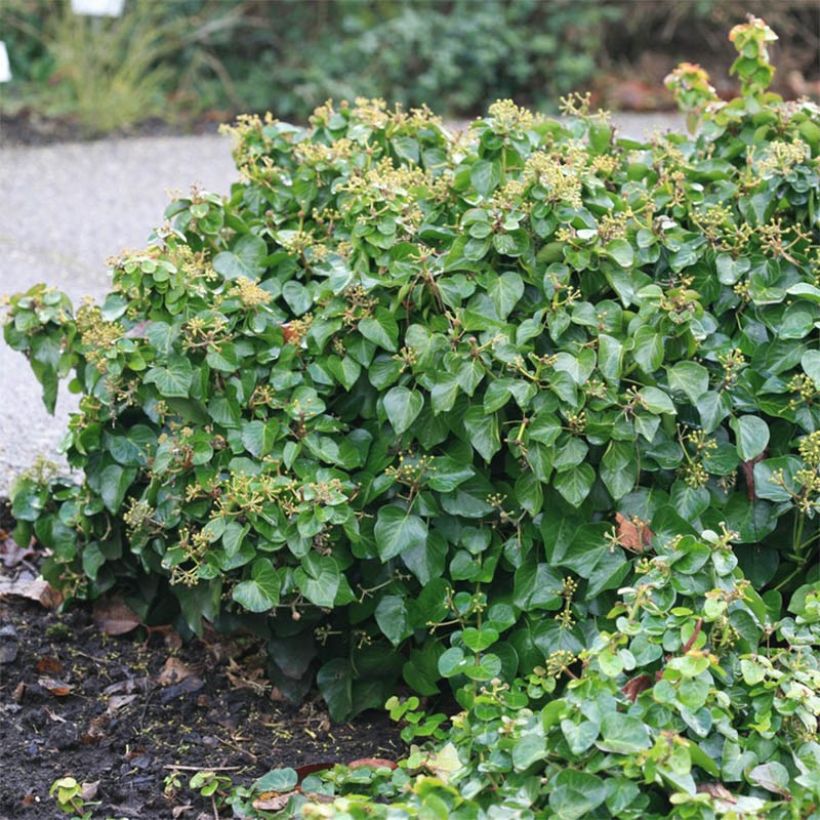

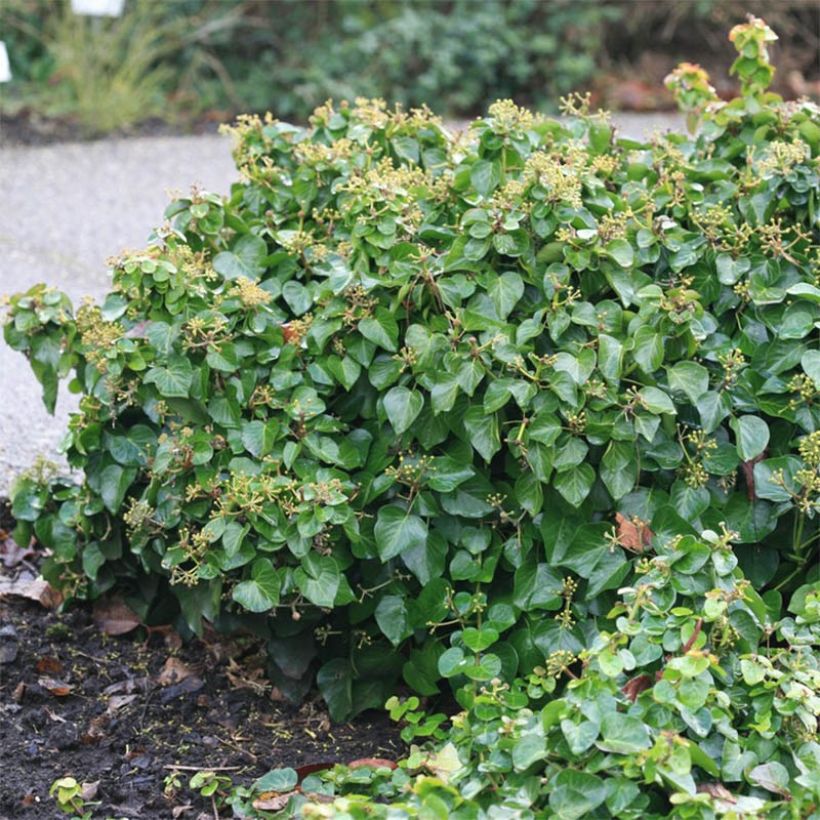

Plant habit
Flowering
Foliage
Botanical data
Hedera
helix
Arbori Compact
Araliaceae
English Ivy, Common Ivy, European Ivy
Cultivar or hybrid
Other Hedera - Ivy
Planting and care
Hedera helix 'Arbori Compact' is easy to grow in any ordinary soil and can be planted all year round. It prefers fertile soil, moist but well-drained, but is quite tolerant of the presence of limestone or clay if the soil is well-worked, and is fairly resistant to drought once established. It will thrive in both sun and shade. Ideally, plant it against a wall in a semi-shaded position sheltered from cold winds to help it establish, and monitor watering during the first 2 years after planting, especially during dry summers. To promote faster growth of young shoots, attach its branches to the ground (layering). Don't hesitate to rejuvenate the base by removing old branches. Regular pruning is necessary to shape it. Remove, if necessary, branches that bear leaves which look different or those that take a more upright and bushy form.
For container cultivation, mix 7 parts ordinary soil, 3 parts compost, and 2 parts sand. Water regularly and apply fertiliser every month during the growing season. Keep the substrate moist.
Planting period
Intended location
Care
-
, onOrder confirmed
Reply from on Promesse de fleurs
Foolproof climbers
Haven't found what you were looking for?
Hardiness is the lowest winter temperature a plant can endure without suffering serious damage or even dying. However, hardiness is affected by location (a sheltered area, such as a patio), protection (winter cover) and soil type (hardiness is improved by well-drained soil).

Photo Sharing Terms & Conditions
In order to encourage gardeners to interact and share their experiences, Promesse de fleurs offers various media enabling content to be uploaded onto its Site - in particular via the ‘Photo sharing’ module.
The User agrees to refrain from:
- Posting any content that is illegal, prejudicial, insulting, racist, inciteful to hatred, revisionist, contrary to public decency, that infringes on privacy or on the privacy rights of third parties, in particular the publicity rights of persons and goods, intellectual property rights, or the right to privacy.
- Submitting content on behalf of a third party;
- Impersonate the identity of a third party and/or publish any personal information about a third party;
In general, the User undertakes to refrain from any unethical behaviour.
All Content (in particular text, comments, files, images, photos, videos, creative works, etc.), which may be subject to property or intellectual property rights, image or other private rights, shall remain the property of the User, subject to the limited rights granted by the terms of the licence granted by Promesse de fleurs as stated below. Users are at liberty to publish or not to publish such Content on the Site, notably via the ‘Photo Sharing’ facility, and accept that this Content shall be made public and freely accessible, notably on the Internet.
Users further acknowledge, undertake to have ,and guarantee that they hold all necessary rights and permissions to publish such material on the Site, in particular with regard to the legislation in force pertaining to any privacy, property, intellectual property, image, or contractual rights, or rights of any other nature. By publishing such Content on the Site, Users acknowledge accepting full liability as publishers of the Content within the meaning of the law, and grant Promesse de fleurs, free of charge, an inclusive, worldwide licence for the said Content for the entire duration of its publication, including all reproduction, representation, up/downloading, displaying, performing, transmission, and storage rights.
Users also grant permission for their name to be linked to the Content and accept that this link may not always be made available.
By engaging in posting material, Users consent to their Content becoming automatically accessible on the Internet, in particular on other sites and/or blogs and/or web pages of the Promesse de fleurs site, including in particular social pages and the Promesse de fleurs catalogue.
Users may secure the removal of entrusted content free of charge by issuing a simple request via our contact form.
The flowering period indicated on our website applies to countries and regions located in USDA zone 8 (France, the United Kingdom, Ireland, the Netherlands, etc.)
It will vary according to where you live:
- In zones 9 to 10 (Italy, Spain, Greece, etc.), flowering will occur about 2 to 4 weeks earlier.
- In zones 6 to 7 (Germany, Poland, Slovenia, and lower mountainous regions), flowering will be delayed by 2 to 3 weeks.
- In zone 5 (Central Europe, Scandinavia), blooming will be delayed by 3 to 5 weeks.
In temperate climates, pruning of spring-flowering shrubs (forsythia, spireas, etc.) should be done just after flowering.
Pruning of summer-flowering shrubs (Indian Lilac, Perovskia, etc.) can be done in winter or spring.
In cold regions as well as with frost-sensitive plants, avoid pruning too early when severe frosts may still occur.
The planting period indicated on our website applies to countries and regions located in USDA zone 8 (France, United Kingdom, Ireland, Netherlands).
It will vary according to where you live:
- In Mediterranean zones (Marseille, Madrid, Milan, etc.), autumn and winter are the best planting periods.
- In continental zones (Strasbourg, Munich, Vienna, etc.), delay planting by 2 to 3 weeks in spring and bring it forward by 2 to 4 weeks in autumn.
- In mountainous regions (the Alps, Pyrenees, Carpathians, etc.), it is best to plant in late spring (May-June) or late summer (August-September).
The harvesting period indicated on our website applies to countries and regions in USDA zone 8 (France, England, Ireland, the Netherlands).
In colder areas (Scandinavia, Poland, Austria...) fruit and vegetable harvests are likely to be delayed by 3-4 weeks.
In warmer areas (Italy, Spain, Greece, etc.), harvesting will probably take place earlier, depending on weather conditions.
The sowing periods indicated on our website apply to countries and regions within USDA Zone 8 (France, UK, Ireland, Netherlands).
In colder areas (Scandinavia, Poland, Austria...), delay any outdoor sowing by 3-4 weeks, or sow under glass.
In warmer climes (Italy, Spain, Greece, etc.), bring outdoor sowing forward by a few weeks.

































